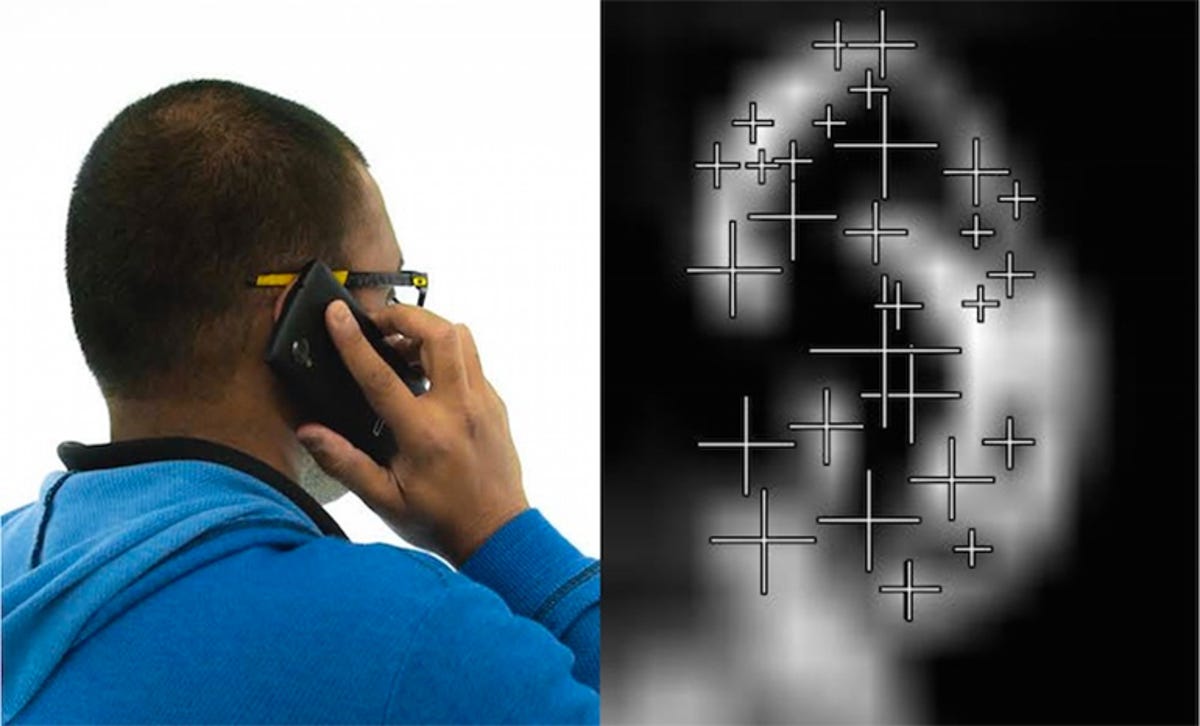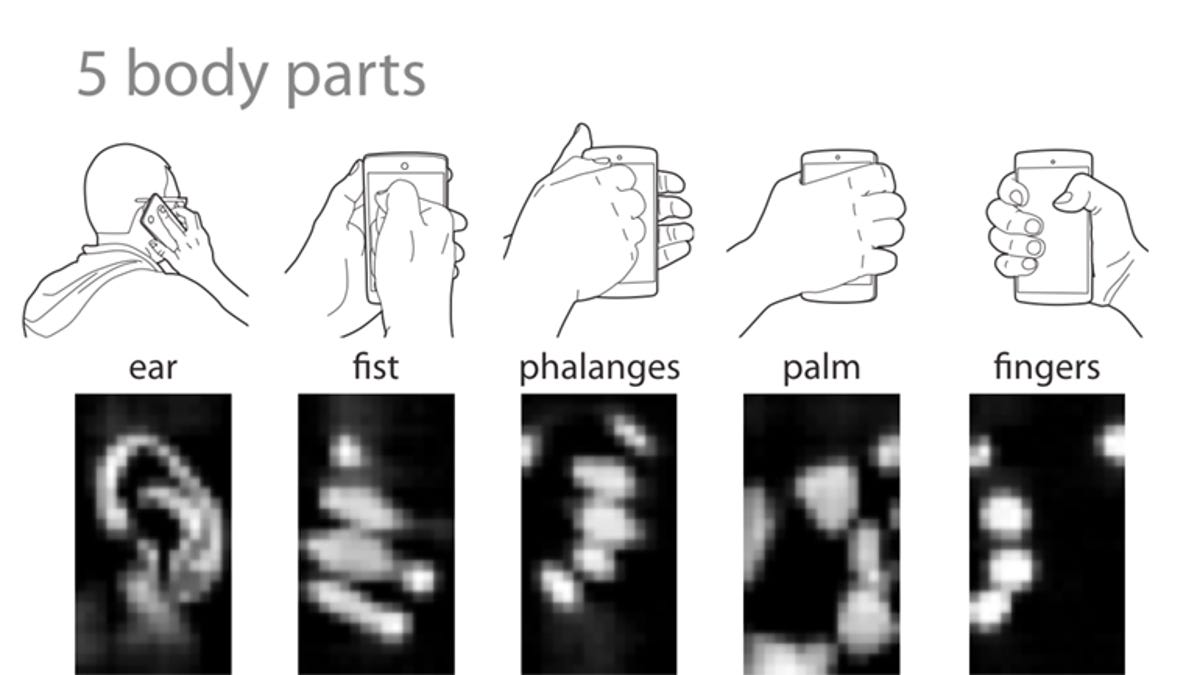
Christian Holz
You may one day be able to unlock your smartphone by holding it against your ear instead of your finger.
That is the goal of Bodyprint, an authentication system created by Yahoo Labs that turns a smartphone’s capacitive touchscreen into a biometric scanner. But because the scanning device is much larger than a fingerprint scanner, the system allows smartphone owners to unlock their handsets using body parts other than their fingerprint — such as their ear when answering a call.
“While the input resolution of a touchscreen is about 6 dpi, the surface area is larger, allowing the touch sensor to scan users’ body parts, such as ears, fingers, fists, and palms by pressing them against the display,” the Yahoo Labs team wrote on the project’s web page.
From email to texts, phonebook entries, and pictures, your phone has lots of personal information that’s potentially accessible to prying eyes. Passcodes are effective but sometimes tedious. Fingerprint scanners are a convenient way to secure handsets, but they are pricey and often limited to high-end handsets, noted the Yahoo team, which was led by Christian Holz
While a capacitive touchscreen is too low resolution to capture the fine lines and whorls of a fingerprint, it can capture larger prints from the body. For example, a phone could scan the unique shape of a user’s ear as they hold the phone to their head to answer a call.
“Bodyprint compensates for the low input resolution with an increased false rejection rate, but does not compromise on authentication precision,” the team wrote. “In our evaluation with 12 participants, Bodyprint classified body parts with 99.98 percent accuracy and identifies users with 99.52 percent accuracy, with a false rejection rate of 26.82 percent accuracy to prevent false positives.”


Christian Holz
The team tested the system against a range of prints. This includes the aforementioned ear print; the print of the user’s knuckles and fingers when they press a fist to the screen; the shape created when the user curls their fingers and presses their intermediate phalanges to the screen; the shape of the user’s palm on the screen; and the shape made by the users fingers as they grip the phone around the back.
These prints were obtained by taking and analysing images of the touch patterns on the screen, rather than two-dimensional location mapping, which is how mobile devices track and process gestures.
The results were precise: “Scanning users’ ears for identification, Bodyprint achieves 99.8 percent authentication precision with a false-rejection rate of 1 out of 13, thereby bringing reliable biometric user authentication to a vast number of commodity devices.”
In a video demonstrating the technology, Bioprint can also be keyed to multiple users on a single device. The use case shown was the phone requiring two users’ permission to access a document. It’s also possible that the technology could improve in the future.
“In the case that future touchscreens support higher input resolutions, up to a point where they may detect the fine structure of fingerprints, Bodyprint will readily incorporate the higher level of detail of sensor data, which will not only extend our approach to further body parts, but likely reduce false rejection rates at the same high levels of authentication precision,” the team said.
The next step in the development of Bodyprint is the improvement of the recognition algorithms, before testing on a wider scale.



